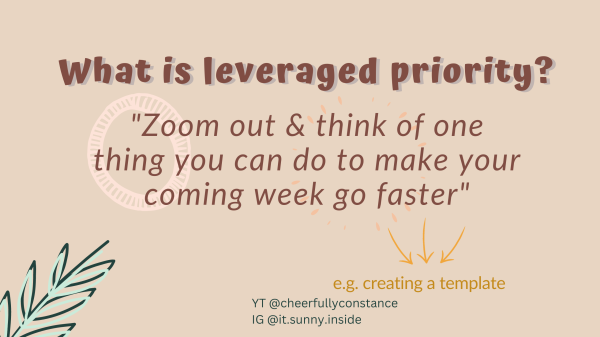Do you often find yourself working late into the night, feeling like there’s always more to do? Do you rush from one task to another, constantly behind schedule, despite having multiple tools and calendars at your disposal? If this sounds like you, it might be time to rethink how you’re managing your time. Long work hours not only drain your energy but can also affect your health, productivity, and happiness. Luckily, it’s possible to shorten your workday and still achieve great results. Here’s how you can take control of your time—and yes, even have time for your hobbies.
The Hidden Signs You’re Working Too Much
Before diving into time-saving strategies, let’s check if you’re working too long without realizing it. Ask yourself:
- When was the last time you looked forward to doing something outside of work?
- Do you rely on quick fixes like alcohol or junk food to unwind?
- Have you skipped exercising or taking a proper break in recent weeks?
- Are you neglecting personal time in favor of more work?
If these questions make you pause, then it’s time to address your work-life balance. A few years ago, I found myself in a similar situation—working 13 to 14 hours a day running my marketing agency. The result? A decline in my health, endless stress, and a loss of joy in my work. But after evaluating my situation, I realized I could still run a successful business and take time for my personal life. It’s all about mastering your time management.
Why We Work Long Hours (And How to Stop)
There are many reasons we feel compelled to work long hours, but the most common ones include:
- Pressure to meet deadlines or career goals.
- The desire for career advancement or recognition.
- Fear of losing job security or being replaced.
- Cultural norms that glorify working hard and long.
- Poor time management or an inability to prioritize.
While these factors may vary, the outcome is usually the same: overwork, burnout, and a decline in both mental and physical well-being. So, how do we break the cycle? It starts with better time management, which is key to getting more done in less time.
4 Time Management Strategies That Actually Work
Over the years, I’ve adopted several time management principles that not only helped me reduce my work hours but also increased my productivity. Here’s a breakdown of the four strategies that have transformed my workday.

1. Time Audit: Take Control of Your Time
The first step to effective time management is realizing that you are in control of how your time is spent. We often work long hours because we prioritize immediate comforts over long-term goals or because we feel we must do everything ourselves.
Action Step: Start by conducting a time audit. Write down everything you need to do for the upcoming week, then track how much time each task actually takes. Tools like the Toggl Track app can be useful for this. By visually seeing where your time goes, you’ll start identifying areas where you can cut back or delegate.
2. Delete the Unnecessary: Let Go of Perfectionism
As a perfectionist, I used to think everything had to be flawless before it was good enough to share. But over time, I realized that done is better than perfect. For example, when I set a goal to post YouTube videos encouraging female entrepreneurs, I let go of obsessing over perfect lighting or makeup. I also asked myself: Is this task truly important for my goal, or is it a distraction?
Action Step: Learn to delete tasks that don’t serve your priorities. Let go of unnecessary commitments like attending events that don’t contribute to your goals, responding immediately to every email or message, and the habit of perfectionism. Instead, focus on high-impact activities.
3. Plan with Leveraged Priorities: Work Smarter, Not Harder
Every day, take at least 15 minutes to plan. Use this time to evaluate your to-do list and prioritize based on leverage. What can you do today that will make tomorrow easier? For instance, spending time creating email templates might take an hour now, but it will save you 30 minutes each week in the future. The goal is to find ways to multiply your efforts for greater results.
Action Step: Prioritize tasks by their ROTI (Return on Time Invested). For me, this means focusing on things that give me the most energy or productivity in the long run. For example, exercise is a top priority because it boosts my energy levels, making me more productive and focused.

Another tip is to block time on your calendar. Instead of letting tasks get lost or overlapping, visually map out when you’ll do each task. This eliminates the guesswork and helps you stay focused.
4. Go For It: Execution is Key
The final step is simple but crucial: execute. It’s easy to get caught up in planning, but nothing changes unless you take action. The secret is consistency, not motivation. Motivation comes and goes, but discipline and small, daily actions lead to success.
Action Step: Once you commit to a task, go for it—no excuses. If you struggle with procrastination, try the 5-second rule by Mel Robbins: Count down from 5 to 1, then start the task before your brain can come up with reasons to delay it. Additionally, use techniques like the Pomodoro Technique (25-minute focused work intervals) to keep yourself on track.
Why You Should Stop Working Long Hours
We all know that working long hours isn’t sustainable, but it’s worth repeating: the negative impacts on your health and productivity are real.
- Physical health risks: Long hours can increase the risk of heart disease, poor sleep, and chronic pain.
- Mental health decline: Stress, anxiety, and burnout are common outcomes of overwork.
- Decreased productivity: Ironically, working more can make you less productive in the long run.
- Damaged relationships: Time spent working late could have been used to nurture relationships or pursue hobbies.
Ultimately, work-life balance is the key to maintaining your physical, mental, and emotional well-being. The goal isn’t just to work less, but to work more effectively so that you can enjoy your life both inside and outside of the office.
Final Thoughts
Managing your time effectively doesn’t require a complete overhaul of your life—it’s about making small, consistent changes that add up. By auditing your time, eliminating unnecessary tasks, prioritizing high-impact activities, and executing without delay, you’ll find that you can achieve your professional goals while still having time for the things you love.
It’s not about working more hours; it’s about working smarter. The more you take control of your time, the more space you’ll create for a fulfilling life outside of work. And who knows? You might just find yourself enjoying that hobby or adventure you’ve been missing.

